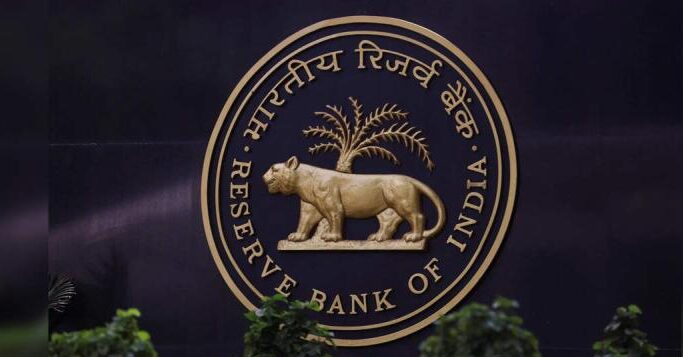
Introduction
The Reserve Bank of India (RBI) has recently introduced a set of revised co-lending guidelines aimed at strengthening transparency, accountability, and fair practices in the Indian lending ecosystem. A new report suggests that these changes could significantly improve clarity between lenders, enhance borrower trust, and ensure better compliance across the financial sector.
The “RBI Co-lending Transparency” has been at the heart of industry discussions since the announcement. These guidelines, which will come into effect from January 1, 2026, mark a decisive step in ensuring that both banks and non-banking financial companies (NBFCs) share responsibility and maintain openness in loan origination and servicing.
Understanding Co-lending in India
Co-lending is a financial arrangement where a bank and an NBFC jointly disburse loans to borrowers, typically in underserved or unbanked segments such as MSMEs, rural markets, and small borrowers. This model allows NBFCs to leverage their local reach and banks to provide capital, creating a win–win scenario.
However, the previous framework often left borrowers confused about who their primary lender was, the breakdown of loan terms, and the nature of their liabilities. Lack of loan-level transparency sometimes led to disputes and reduced borrower confidence.
The revised guidelines are RBI’s attempt to correct these gaps and establish a standardized disclosure and monitoring system.
Key Highlights of RBI’s Revised Co-lending Guidelines
1. Minimum 10% Loan Retention
Under the new rules, the originating NBFC must retain a minimum 10% share of every loan throughout its tenure. This ensures skin in the game, meaning NBFCs will have a direct stake in loan performance, thereby reducing careless lending practices.
2. Standardized Disclosures to Borrowers
To improve RBI Co-lending Transparency, both lenders must clearly disclose:
- Names of both the bank and NBFC involved
- Exact loan amount from each lender
- Applicable interest rates from both entities
- Processing fees and charges from each party
This aims to remove any confusion about loan ownership and ensure borrowers know exactly who holds what portion of their debt.
3. Uniform Loan Agreement
Instead of multiple agreements, borrowers will now receive one consolidated loan agreement, signed jointly by the bank and NBFC. This simplifies documentation and reduces administrative hassles.
4. Common Loan Servicing
Both lenders will appoint a single point of contact for loan servicing and grievance redressal, avoiding the previous problem of borrowers being passed between two institutions.
5. Faster Data Reporting
RBI now mandates monthly reporting of co-lending data, including loan performance, defaults, and risk assessment. This improves regulatory oversight and helps track sector-wide health.
Why RBI Co-lending Transparency Matters
Industry experts believe these changes will bring three major benefits:
a) Better Borrower Trust
Clear disclosures and a single agreement will prevent hidden charges and miscommunication, making the borrowing process fairer.
b) Reduced Systemic Risk
With both parties retaining a portion of the loan, there’s shared responsibility for repayment and risk mitigation.
c) Enhanced Compliance
Standardized reporting will help the RBI track co-lending practices more efficiently, reducing the scope for malpractice.
Impact on Banks and NBFCs
For banks, these rules mean greater operational collaboration with NBFCs and more structured loan processing. For NBFCs, the changes encourage responsible lending while still allowing them to benefit from the credit muscle of bigger banks.
According to the report, the revised norms could increase credit penetration in rural and semi-urban areas by making co-lending safer and more borrower-friendly. However, there may be initial compliance costs as institutions adapt their systems to the new requirements.
Industry Reactions
- Banking Analysts: Applaud the move for aligning India’s co-lending model with global best practices, citing it as a critical reform for long-term sustainability.
- NBFC Associations: Support the guidelines but request more clarity on implementation timelines for smaller NBFCs.
- Borrowers’ Rights Groups: Welcome the single loan agreement and clear disclosures, which they say will reduce exploitation.
Challenges Ahead
While the revised framework has been largely welcomed, there are some foreseeable challenges:
- Training staff across banks and NBFCs for uniform compliance.
- Updating loan management software to reflect shared loan details.
- Avoiding delays in monthly data reporting.
If addressed well, these hurdles are unlikely to outweigh the benefits.
Linking with RBI’s Broader Vision
The RBI has been steadily working towards greater financial transparency—from credit score reforms to digital lending norms. The RBI Co-lending Transparency guidelines fit perfectly into this roadmap, bridging gaps between lenders, borrowers, and regulators.
These changes also align with India’s financial inclusion goals, ensuring credit access to underserved markets without compromising borrower rights or lending discipline.
Conclusion
The revised co-lending guidelines mark a significant leap forward in building trust and transparency in India’s lending system. With clear rules on loan retention, disclosures, and joint agreements, the RBI is setting a precedent for responsible co-lending that could be a global model.
By January 2026, borrowers should expect a more transparent, accountable, and borrower-friendly lending experience, while banks and NBFCs will benefit from reduced disputes and a stronger compliance framework.
